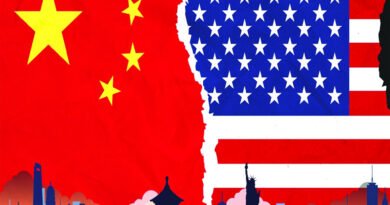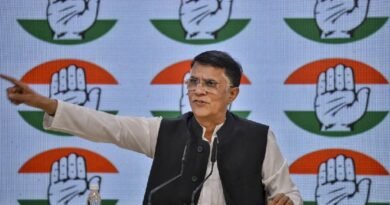Left behind: The fall of the CPM
The revival of the party in West Bengal would largely depend on the youth force, coupled with politically experienced and committed leaders
In independent India, for the first time, no communist candidate was elected to the State Assembly”. The crux of the embedded message in one line mentioned in the post election review of India’s largest communist party — the Communist Party of India (Marxist) — was enough to flinch the entire communist fraternity in the country and all other left and even non-left political entities, small or big. The information relates to CPM’s disastrous performance in the just concluded West Bengal State Assembly poll (2021).
An absolute failure, losing all the 138 seats contested, and resultant historic trounce the communists ever faced since 1946 has not only caught the party napping but it is also apprehended as a precursor to a possible existential crisis, if not the identity. The leadership’s task is to tighten the organisational structure, with disciplinary actions against the non-performing members irrespective of the positions, feel grassroot level party workers and fellow-travelers. Within ten years of its ousting from power, the CPM’s downfall fully stopped with the defeat in all the seats, throwing the party into the state of non-existence as law makers. The new power game at the State Legislative Assembly began with BJP bagging 77 seats as the second largest party in the Assembly with Indian Secular Front (ISF) ranking third —far behind the BJP — with only one seat as the lone representative of the Samjukta Morcha consisting of the Left Front, Congress and ISF (recorded as a candidate of Rashtriya Secular Majlis Party).
The stunning blow in the 2011 Assembly election and notwithstanding subsequent strong warnings followed by spate of directives from CPM’s central leadership over the last ten years to stem the rot, the State leadership failed to implement the central guidelines aimed at retrieving the eroded mass base, or maybe, disingenuously implementing the central line. In fact, the whistle blowing by the central leadership started much before that when in the 2008 Panchayat election the share of vote collapsed from previous 90 per cent to 52 per cent.
CPM’s share of vote that stood at 19.75 percent in 2016 Assembly election plunged to 6.18 percent in 2019 Lok Sabha poll and collapsed at 4.73 percent in 17th Assembly election. Over the last five years, the CPM’s vote share squeezed by 15.02 per cent. On the other hand, during this period, the BJP has strengthened its position significantly.
While emphasising that corrective steps be taken immediately without wasting more time, the central committee in their review report has highly praised the participation of youth in the Assembly election. But time will tell whether the young guards possess the ability to revive the party, even partially. During the election campaign they worked with full energy and enthusiasm. The party must take this opportunity to ensure greater involvement of the youth force, the central committee added.
The State party leadership has been suggested to frame guidelines to ensure greater participation of young party workers in different committees. Moreover, to provide opportunities to those enthusiastic young workers who cannot be included in various committees due to age restriction, the State party may consider a quota system for them. Besides, initiatives have to be taken to rope in and involve more and more young Left supporters in the party programmes and activities.
To douse any apprehension about probable existential crisis in future, the need of the hour is thorough overhauling of the leadership structure — from branch to State levels — based not merely on age limitation but on the ground-level spot assessment of performance of concerned leaders instead of archaic system including the bureaucratic degeneration of ‘democratic centralism’. The party needs to scan the performance of those who have miserably failed, without valid and plausible reasons, to implement the directives issued after the 2011 poll debacle and ?nd out reasons of non-implementation thereof. But more importantly, the collapse is systemic rather than individual. The question is whether CPI(M) leadership in West Bengal has the guts to let an independent and non-party group of political scientists and sociologists to get the matter critically reviewed.
Why despite its “election propaganda and campaign against alleged ‘politics of violence’ being practiced by the ruling TMC over the last ten years”, the electorate did not consider Samjukta Morcha as an alternative force that appears to be haunting the youth leaders.
Equally, if not more, important issue relates to CPM’s gross miscalculation of the positive and profound impact of manifold social welfare schemes — from Khadya Sathi to Swasthya Sathi — misconstrued as pre-poll “dole politics” of the Chief Minister. Not known to many, the CPM leadership indirectly did appreciate these relief schemes in its review report which otherwise was disregarded and campaigned during election as populist measures.
But the fact remains that the alleged triviality of a section of leaders at various structural levels to the urgent and immediate tasks is understood to have made a large section of party workers and supporters grossly unhappy, annoyed and helped develop a negative mindset gradually distancing themselves from the party. This led to a signi?cant transition of allegiance and support of the erstwhile Left minders to other political entities.
The revival of the party’s political base in the State would largely depend on the youth force in the party coupled with politically experienced and committed leaders. The State CPM today needs more mass leaders like late Subhash Chakraborty and not class leaders.
(The writer is a senior journalist and political analyst. The views expressed are personal.)
Source: The Pioneer




